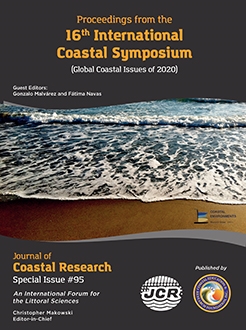Torres, M.J.; Nadal-Caraballo, N.C.; Ramos-Santiago, E.; Campbell, M.O.; Gonzalez, V.M.; Melby, J.A., and Taflanidis, A.A., 2020. StormSim-CHRPS: Coastal Hazards Rapid Prediction System. In: Malvárez, G. and Navas, F. (eds.), Global Coastal Issues of 2020. Journal of Coastal Research, Special Issue No. 95, pp. 1320-1325. Coconut Creek (Florida), ISSN 0749-0208.
Recent advances in high-performance computing and numerical modeling have resulted in the development of high-fidelity storm surge and wave simulation models that produce accurate and detailed representation of physical (hydrodynamic) processes that can support high-accuracy forecasting applications. Unfortunately, the computational demand of these high-fidelity models makes practical application for real-time emergency management and operations challenging. However, metamodeling of storm response has matured to the point of application and has the advantage of extremely fast simulation with only minor degradation of accuracy. The StormSim Coastal Hazards Rapid Prediction System (StormSim-CHRPS) performs rapid prediction of coastal storm hazards, including real-time hurricane-induced flooding and risk assessment. Its enhanced computational efficiency was developed using a machine learning method called Gaussian process metamodeling (GPM). As a result, StormSim-CHRPS predictions preserve the accuracy of the high-fidelity hydrodynamic numerical models archived and distributed through the Coastal Hazards System (CHS). A hurricane parametrization approach employed in coastal hazard studies, known as the joint probability method (JPM), provides the input to the GPM. Possible GPM outputs include a wide range of coastal hazards, including storm surge, wave height, period, and direction, currents, wind, and rainfall. The implementation of GPM allows StormSim-CHRPS to efficiently and accurately predict the response of a hurricane ensemble in a matter of a few seconds and tens of thousands of different hurricane scenarios in a few minutes, within a probabilistic rapid prediction framework, making it an ideal technology for real-time hazard prediction and long-term risk assessment applications.





